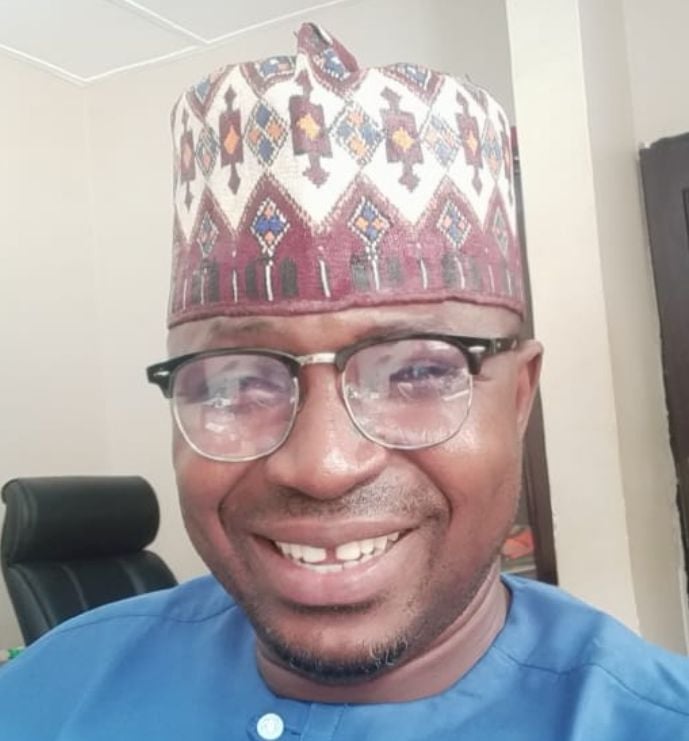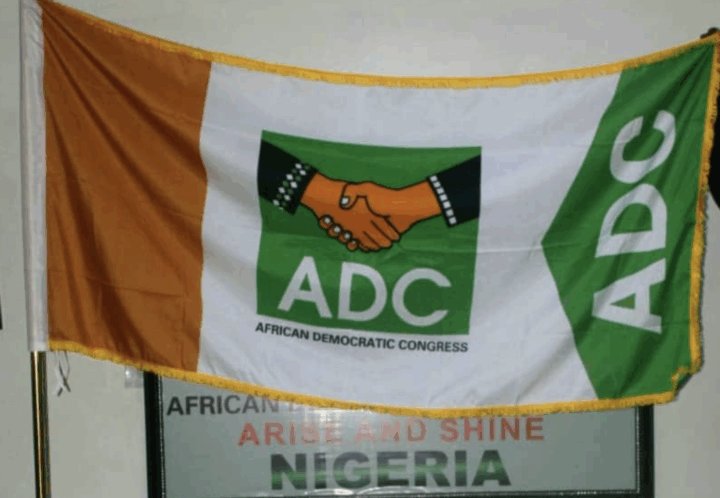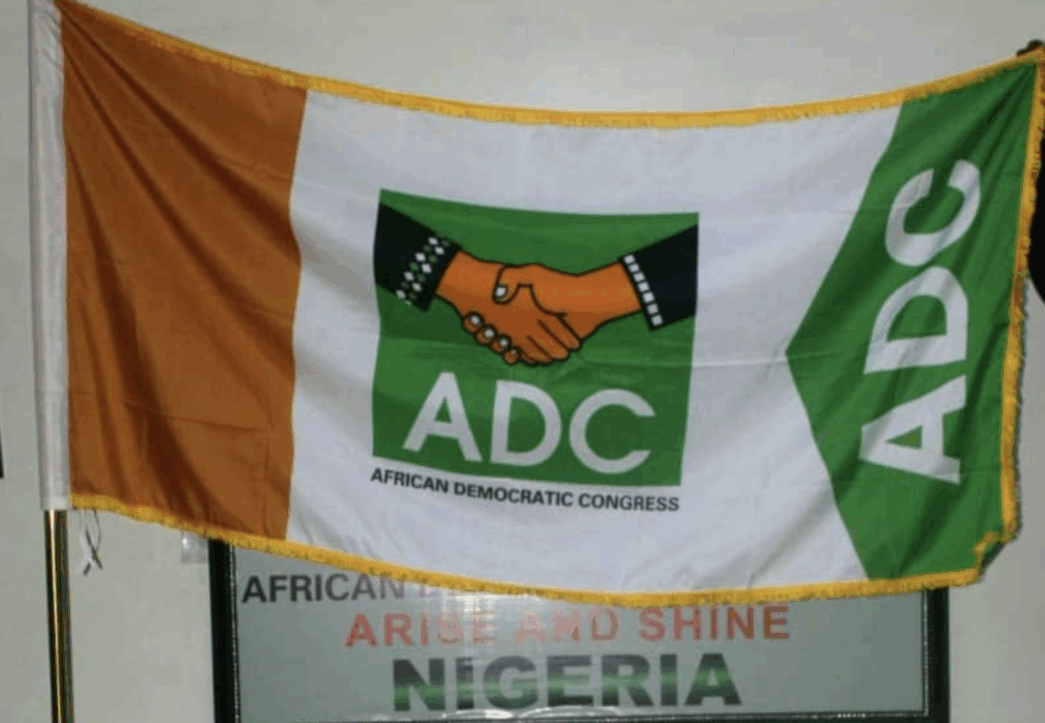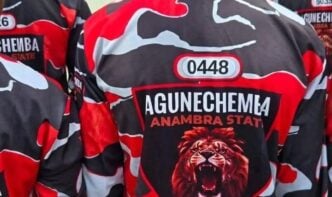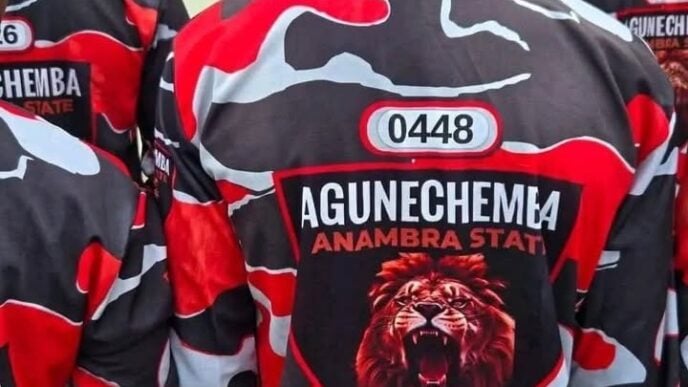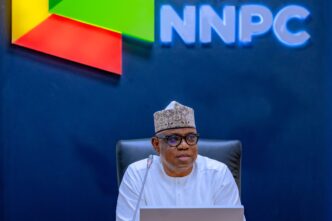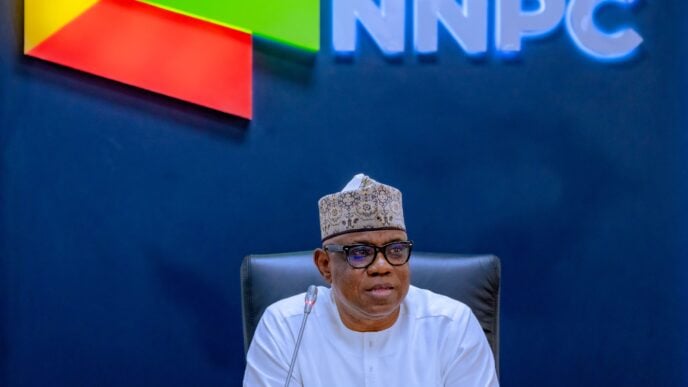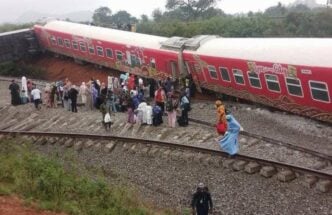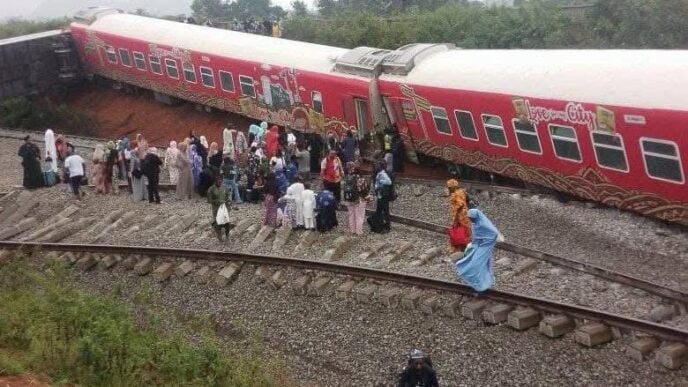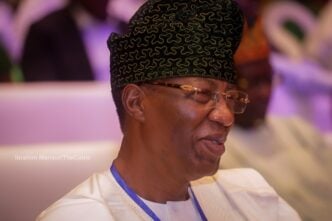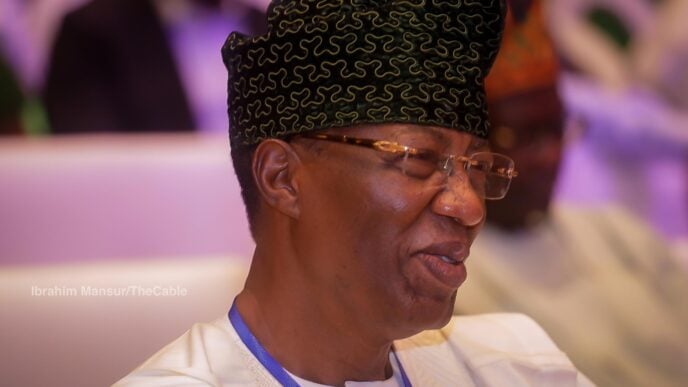The by-elections of Saturday, August 16, 2025, scattered across 12 Nigerian States, from Adamawa to Jigawa, Kaduna, Ọ̀yọ́, Ogun, Edo, Anambra, and Kogi—have once again exposed the gulf between a creation of the media, and reality in Nigeria’s opposition politics. For all the hype, for all the projections, and for all the ink spilled, on the so-called potency of the African Democratic Congress (ADC) opposition coalition, the results were nothing short of sobering. The coalition did not merely fail to win; it also failed to even come close to being second-placed in any of the contests.
About a couple of months ago, when the news broke that some political heavyweights from across some opposition parties, including the largest of them all—the People’s Democratic Party (PDP)—had come together to form a coalition, they said the main purpose was to unseat the incumbent president, Asiwaju Bola Ahmed Tinubu, and his ruling All Progressives Congress (APC), in the forthcoming 2027 general election. The razzmatazz has been such that it can only be withstood by, not the faint-hearted. Even yours sincerely empathized with and feared for the ruling party while at the same time mourning the “demise” of the PDP. But upon a second look at the hurdle of reconciling the labyrinth of personal interests by the political gladiators that were said to be part of the coalition, I realised, it was not going to be a stroll in the park for the ADC. The coalition has a battle to win, against itself first, before taking on the ruling APC. Then came the by-election, and subsequently, the results.
The recently concluded bye-elections were, however, a kind of “reality check.” The results have sparked intense debate about the potency of the opposition coalition formed using the African Democratic Congress (ADC) as a platform. Despite grand announcements and high-profile defections, the ADC failed to secure a single seat or even come second, let alone emerge as a contender in any of the constituencies. Meanwhile, the ruling All Progressives Congress (APC) dominated, winning 12 out of 16 constituencies, while the Peoples Democratic Party (PDP), New Nigeria Peoples Party (NNPP), and All Progressives Grand Alliance (APGA) claimed the remaining seats with one apiece. This performance has raised critical questions: Is the ADC’s purported electoral potency merely a “media creation,” or does it really have the potential to challenge the APC in the 2027 general elections?
1. The Bye-Election Results: A Brutal Wake-Up Call
Advertisement
The ADC’s performance in the by-elections was nothing short of abysmal. In Anambra State, for instance, the ADC candidate for the Anambra South Senatorial District, Donald Amangbo, garnered a meager 2,889 votes, compared to APGA’s 90,408 votes. Similarly, in Kaduna State, the APC won decisively in the Chikun-Kajuru Federal Constituency with 23,089 votes, while the ADC failed to make any impact. The coalition’s inability to even record a second-place finish in any state suggests a significant disconnect between its media portrayal and its grassroots effectiveness and reality.
The ADC leadership, however, attributed these losses to widespread electoral malpractices, including voter intimidation, vote-buying, and administrative irregularities. Bolaji Abdullahi, the ADC National Publicity Secretary, claimed that in one state, a vote-buyer was caught with as much as ₦25.9 million intended to influence voters. However, these accusations ring hollow when juxtaposed with the coalition’s conspicuous lack of preparedness. The ADC did not field candidates in most constituencies, further undermining its credibility as a viable opposition force.
2. The Coalition’s Structural Weaknesses
Advertisement
The ADC-led coalition boasts an impressive roster of political heavyweights, including former Vice President Atiku Abubakar, Peter Obi, Nasir El-Rufai, Rotimi Amaechi, Ogbeni Rauf Aregbesola, and Babachir Lawal. Despite this, the coalition is plagued by internal contradictions and conflicting ambitions. The political structure needed at the grassroots level is so weak to the point of non-existence. Atiku and Obi, both presidential aspirants, are yet to resolve their rivalry from the 2023 elections. Meanwhile, by this time in 2013, during the formative years of APC, the party had managed to resolve the issue of who, among the various tendencies in the newly formed party, goes for which office, especially the presidency. But in this case (of the ADC), their inability to unite behind a single candidate could splinter the opposition vote, as it did in 2023. The diversity of the coalition, comprising old-guard PDP members, reformists like Obi, and former APC loyalists, also poses a challenge. Without a shared ideology or a clear power-sharing arrangement, the coalition risks collapsing under the weight of these contradictions. As noted by political analysts, the ADC lacks the grassroots structure and financial war chest of the APC or PDP, making it vulnerable to internal disputes and external pressure. Besides, the roles played in the previous administrations by each member of the coalition are well documented. That may take the wind off their sails as they sell the mantra of rescue to Nigerians. You can’t be a part of a problem and, at the same time, be a part of the solution. Nigerians are not likely going to buy that.
3. Historical Precedents: Lessons from Past Coalitions
Nigeria’s political history is littered with failed opposition alliances. The only successful merger, the APC in 2013, succeeded because key leaders like Muhammadu Buhari and Bola Tinubu subordinated their individual ambitions to the overall aims and objectives of the party—defeating the PDP, as noted earlier. In contrast, the ADC coalition appears driven primarily by personal ambitions and “shared animosity” toward Tinubu rather than a shared vision for governance. Although a main driver of the APC, too, then, was the desire to unseat President Goodluck Jonathan, there were ideological similarities among most of the tendencies, like the ACN, CPC, ANPP, and APGA, safe for the splinter group known as the nPDP (new PDP) from the then ruling party, the PDP. The tendencies were mostly of the (leftist) socialist ideological leaning. But in the case of the ADC, I’m still trying to reconcile the presence of Aregbesola and Atiku, for instance, in the same political boat, as far as ideology is concerned.
In terms of manner of formation, the ADC’s adoption as a coalition platform has drawn comparisons to the 2013 merger, but these comparisons are flawed. The APC was built on the collapse of several major parties into a single entity, whereas the ADC remains a fringe party with minimal electoral footprint. It is like someone moving into an unkempt, abandoned building, as opposed to moving into a well-furnished one with few important belongings. When APC was formed in 2013, major parties collapsed their structures into one. In this case, ADC has no comparable foundation.
Advertisement
4. The Media Narrative vs. Ground Reality
The media has played a pivotal role in amplifying the ADC coalition’s perceived threat to the APC. Headlines proclaiming the coalition’s potential to “destroy APC’s support base” or “rescue Nigeria” have created an illusion of momentum. However, the bye-election results suggest that this momentum is largely confined to press releases and social media buzz rather than tangible voter support.
The presidency and APC leaders have dismissed the coalition as a “hollow alliance of displaced politicians” and a “coalition of convenience.” Minister of the Federal Capital Territory Nyesom Wike mocked the coalition, asking, “What real value do they offer Nigerians?” Even within the ADC, dissenting voices like Dumebi Kachikwu, the party’s 2023 presidential candidate, have criticized the coalition as a gathering of “geriatrics” with no new vision.
5. The Path to 2027: Can the ADC Overcome Its Challenges?
Advertisement
For the ADC to pose a credible threat in 2027, it must address several critical issues:
Leadership Consensus: The coalition must resolve the Atiku-Obi rivalry and agree on a consensus candidate early enough to build a unified campaign.
Advertisement
Grassroots Mobilization: The ADC needs to invest in building structures at the ward and local government levels rather than relying on elite endorsements on social media, where only a tiny minority of voters dwell (where the majority of its dwellers don’t vote or have PVC). Or on national television that most Nigerian voters do not have access to watching, courtesy of the non-affordability of pay TV and epileptic power supply across the nation.
Ideological Clarity: The coalition must articulate a clear vision beyond opposing Tinubu. Voters are increasingly skeptical of alliances that lack substantive policy proposals. Unlike the way the APC hoodwinked the people with anti-Jonathan rhetoric, without a clear and well-articulated policy proposal, except the anti-corruption posture of its presidential candidate at the time, Muhammadu Buhari, Nigerians don’t seem ready to swallow such ideological hollowness this time around. One of the articles of trade was Buhari’s touted anti corruption stance. However, the jury is still out on the subject of which administration is more corrupt, between Jonathan’s and Buhari’s.
Advertisement
Electoral Preparedness: The coalition cannot afford to skip contests or blame losses solely on malpractices. It must demonstrate competitiveness in future elections to retain credibility. That would determine its ability to be taken seriously by regional political blocs.
Another major obstacle the coalition has to overcome is whether major political communities believe it will serve their respective interests. From a northern politician’s perspective, for instance, 2031, and not 2027, is the target, whether as a PDP, an ADC, or an APC member. In 2027, the northern elements in the coalition would, therefore, not want to back a southerner who is not constitutionally limited to one term. This is because, with the benefit of hindsight, they know it would be tantamount to daydreaming if their experience with Jonathan in 2011/2015 is anything to go by. For the Northern elements in the PDP then, having supported the former Bayelsa State Governor in the 2011 presidential election, there was a reported understanding that, in 2015, Jonathan would give room for a northerner to start a fresh eight-year (two-term) presidency, which Late Umaru Yar’Adua could not complete as a result of ill health that led to his demise after less than three years in office, in 2010. But to their utmost disappointment, he repudiated the “said agreement,” picked the party’s presidential ticket, and ran against Gen. Muhammadu Buhari in 2015 but lost.
Advertisement
In conclusion, is ADC a media phenomenon or a sleeping giant?
The ADC coalition’s poor showing in the 16th of August 2025 by-elections suggests that its perceived potency is, for now, more of a “media creation” than reality. However, it would be premature to write off the coalition entirely. Politics is dynamic, and the two years leading to 2027 provide ample time for reorganization and strategy refinement. If the coalition can reconcile internal conflicts, build a grassroots movement, and present a compelling policy alternative before Nigerians, it could still emerge as a formidable force. Until then, the ADC remains a party of potential rather than proven power—a sleeping giant that has yet to awaken. Anything short of that, the LP (for Peter Obi), the PDP (for Atiku Abubakar), and even the Social Democratic Party (SDP) remain more veritable platforms, or alternatives that could cause an electoral tsunami, than the new coalition.
The lesson here is stark: electoral potency is not built on press releases, radio or television soundbites, or well-meaning communiqués. It is forged in the grueling trenches of grassroots mobilization, regional alignments, party discipline, financial muscle, and strategic alliance-building. The ADC cannot simply ride on the disillusionment of Nigerians with the APC; it must earn trust through visible structure, credible candidates, and clear messaging that resonates beyond elite circles.
As the countdown to 2027 ticks louder, the ADC must decide whether it wants to remain a coalition of sound—or rise as a coalition of substance. Nigerians are watching, wary of hollow promises but desperate for alternatives. The ballot, unlike the media, is merciless; it does not reward noise, only numbers. The journey to 2027 will be a test of whether the ADC can transform its media hype into electoral reality. For the sake of Nigerian democracy, one hopes the opposition can rise to the challenge. But for now, the ADC looks more like a creation of the media than the real deal.
Abubakar writes from Ilorin, Kwara State. He can be reached via 08051388285 or [email protected].
Views expressed by contributors are strictly personal and not of TheCable.
